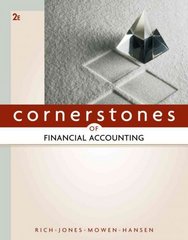



(Click the icon to view the 2019 standard deduction amounts.) During 2019, Kaitlyn, a single taxpayer, reports the following income and expense items relating to her interior design business: (Click the icon to view the data.) Read the requirements Kaitlyn also worked part-time during the year, earning $15,000. She reports a long-term capital gain of $4,000, and a short-term capital loss of $3,700. Her itemized deductions total $5,000. Requirement a. What is Kaitlyn's taxable income or loss for the year? (Use a minus sign or parentheses for a loss or negative adjusted gross income.) Gross income from business 53,000 Minus: Business expenses Net business income (loss) Salary Adjusted gross income Itemized deductions Taxable income (loss) Requirement b. What is Kaitlyn's NOL for the year? (Use a minus sign or parentheses for a loss or for a deduction. Use a positive number for all amounts being added.) Taxable income (loss) Nonbusiness deductions: Nonbusiness deductions: Minus: Plus: Excess of nonbusiness deductions over nonbusiness income Net operating loss . 1 Data Table $ 53,000 42,000 Revenues Cost of goods sold Advertising Office supplies Rent 3,200 1,500 10,700 Contract labor 31,000 Print Done X Reference - STANDARD DEDUCTION Filing Status $ 24,400 $ 18,350 $ 12,200 $ 12,200 Married individuals filing joint returns and surviving spouses Heads of households Unmarried individuals (other than surviving spouses and heads of households) Married individuals filing separate returns Additional standard deduction for the aged and the blind; Individual who is married and surviving spouses Additional standard deduction for the aged and the blind; Individual who is unmarried and not a surviving spouse Taxpayer claimed as dependent on another taxpayer's return: Greater of (1) earned income plus $350 or (2) $1,100. * These amounts are $2,600 and $3,300, respectively, for a taxpayer who is both aged and blind. $1,300* $1,650* Print Done (Click the icon to view the 2019 standard deduction amounts.) During 2019, Kaitlyn, a single taxpayer, reports the following income and expense items relating to her interior design business: (Click the icon to view the data.) Read the requirements Kaitlyn also worked part-time during the year, earning $15,000. She reports a long-term capital gain of $4,000, and a short-term capital loss of $3,700. Her itemized deductions total $5,000. Requirement a. What is Kaitlyn's taxable income or loss for the year? (Use a minus sign or parentheses for a loss or negative adjusted gross income.) Gross income from business 53,000 Minus: Business expenses Net business income (loss) Salary Adjusted gross income Itemized deductions Taxable income (loss) Requirement b. What is Kaitlyn's NOL for the year? (Use a minus sign or parentheses for a loss or for a deduction. Use a positive number for all amounts being added.) Taxable income (loss) Nonbusiness deductions: Nonbusiness deductions: Minus: Plus: Excess of nonbusiness deductions over nonbusiness income Net operating loss . 1 Data Table $ 53,000 42,000 Revenues Cost of goods sold Advertising Office supplies Rent 3,200 1,500 10,700 Contract labor 31,000 Print Done X Reference - STANDARD DEDUCTION Filing Status $ 24,400 $ 18,350 $ 12,200 $ 12,200 Married individuals filing joint returns and surviving spouses Heads of households Unmarried individuals (other than surviving spouses and heads of households) Married individuals filing separate returns Additional standard deduction for the aged and the blind; Individual who is married and surviving spouses Additional standard deduction for the aged and the blind; Individual who is unmarried and not a surviving spouse Taxpayer claimed as dependent on another taxpayer's return: Greater of (1) earned income plus $350 or (2) $1,100. * These amounts are $2,600 and $3,300, respectively, for a taxpayer who is both aged and blind. $1,300* $1,650* Print Done










